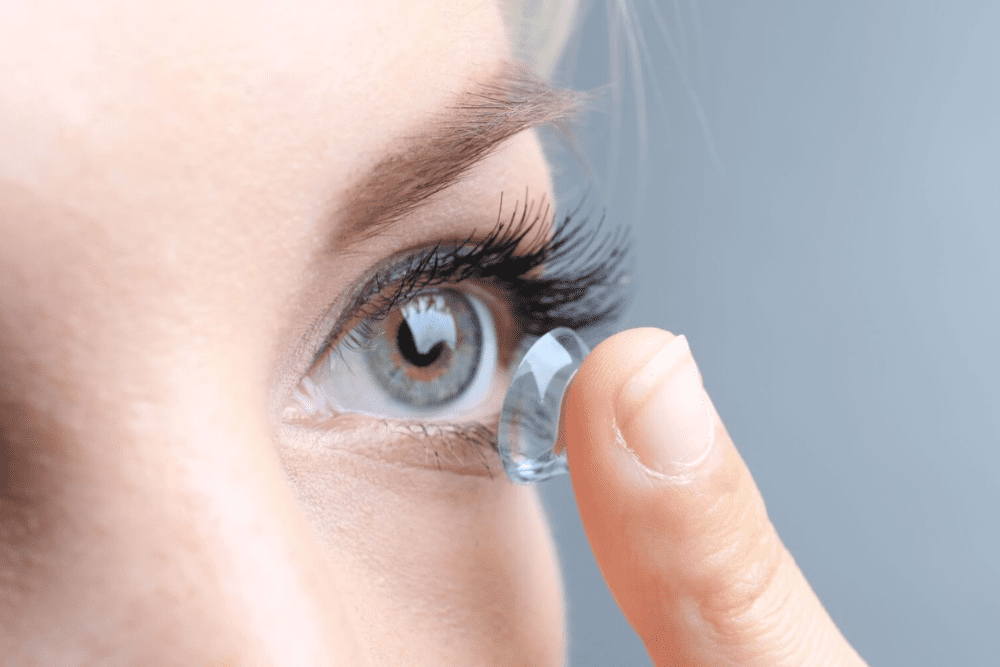For many people in their 40s, the gradual onset of presbyopia can be a frustrating reminder of ageing.
The need to hold objects at arm’s length, use extra lighting to read, or increase the font size on digital devices are telltale signs.
While glasses with progressive lenses have been the traditional solution, multifocal contact lenses present a modern alternative that combines the benefits of both near and far vision correction.
To learn more about the benefits, risks, and future advancements of multifocal contact lenses, we interviewed Dr. Lee Shu Yen, a senior consultant ophthalmologist and vitreoretinal surgeon at Advanced Eye Clinic and Surgery.
How Do Multifocal Contact Lenses Work?
Multifocal contact lenses, such as the Acuvue Oasys Max 1-Day Multifocal, are designed with concentric rings, each offering a different power to help you see at various distances.
Unlike progressive glasses, which require tilting your head to see through the appropriate lens section, multifocal contacts adapt to your pupil size as it changes with distance.
This allows for seamless vision transitions, whether you’re reading a book or scanning the horizon.
But how do these lenses compare to traditional progressive glasses in terms of long-term eye health?
Comparing Multifocal Contact Lenses and Progressive Glasses
Dr. Lee notes that while multifocal contact lenses offer significant convenience, especially for those leading active lifestyles, it’s crucial to consider the potential long-term effects on eye health.
“Multifocal contact lenses are generally safe for long-term use, but they require diligent eye care practices. Poor hygiene or overwearing the lenses can lead to complications such as dry eye syndrome, corneal ulcers, or infections,” she explains.
In comparison, progressive glasses do not carry the same risks, making them a safer option for individuals who may not be able to commit to the necessary maintenance routine for contact lenses.
Technological Advancements on the Horizon
When asked about future advancements in multifocal lens technology, Dr. Lee expressed optimism. “We are on the brink of exciting developments in this field,” she says.
“Expect to see lenses with enhanced materials that offer better moisture retention and oxygen permeability, which will significantly improve comfort for prolonged wear. Additionally, we may see innovations in lens design that provide even more seamless transitions between different focal points, reducing the adaptation period for new users.”
These advancements could make multifocal lenses an even more appealing option for those currently relying on glasses.
Choosing Between Multifocal Lenses and Other Corrective Options
For patients who struggle with both myopia and presbyopia, the decision between multifocal contact lenses and other corrective measures can be challenging.
Dr. Lee advises considering lifestyle, visual needs, and eye health history. “For individuals with high myopia or astigmatism, multifocal lenses may not provide the same clarity as glasses, especially at extreme prescriptions. It’s essential to consult with your optometrist or ophthalmologist to evaluate whether these lenses can meet your specific needs.”
She further adds, “Patients who are very active and prefer not to wear glasses might find multifocal lenses a game-changer, offering freedom and flexibility. However, for those who prioritise the highest possible clarity, especially for detailed work or reading, progressive glasses may still be the better option.”
The Fitting Process and What to Expect
If you decide to try multifocal contact lenses, be prepared for a fitting process that may take some time. “It often requires two or more fitting sessions to find the right prescription,” Dr. Lee points out. “This is because we need to account for your visual priorities, whether near or far, and ensure that both your eyes are working well together.”
The adjustment period varies for each individual, with some users adapting within a week and others needing a month or more to feel comfortable. Dr. Lee advises patience and open communication with your eye care provider during this time.
Conclusion
Multifocal contact lenses offer a modern solution for those facing the dual challenge of myopia and presbyopia.
While they may not be suitable for everyone, advancements in lens technology are making them an increasingly viable option.

